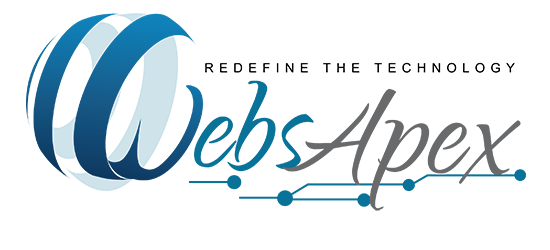As we enter 2025, the world of mobile app development continues to evolve rapidly. Choosing the right mobile app development framework is crucial for building high-performance, scalable, and user-friendly apps. With a wide array of frameworks available, it can be overwhelming to select the best one for your project. In this guide, we’ll explore the top mobile app development frameworks in 2025, providing you with an in-depth look at their features, benefits, and best use cases to help you make an informed decision.
1. React Native: The Most Popular Cross-Platform Framework
React Native remains a dominant choice in mobile app development due to its efficiency in building cross-platform apps. Developed by Facebook, React Native allows developers to write code once and deploy it on both iOS and Android platforms. It leverages JavaScript, the most widely used programming language, and provides a native-like experience with faster development cycles.
Key Features:
Cross-platform compatibility
Hot reloading for faster updates
Rich set of pre-built components
Strong community support
Best For: Social media apps, e-commerce platforms, and apps requiring a native-like experience across platforms.
2. Flutter: Google’s Powerful Framework for Beautiful UIs
Flutter, developed by Google, has quickly gained popularity for its ability to create visually stunning, natively compiled applications for mobile, web, and desktop from a single codebase. With its rich set of customizable widgets and a growing community, Flutter is ideal for developers looking to create beautiful, high-performance apps with smooth animations.
Key Features:
High performance due to native compilation
Flexible and customizable widgets
Single codebase for iOS, Android, and web
Excellent support for animations and UIs
Best For: Startups, high-performance apps, and projects that require beautiful UIs with smooth animations.
3. Xamarin: The Microsoft-backed Framework
Xamarin, backed by Microsoft, allows developers to build apps for iOS, Android, and Windows using C#. With the help of Xamarin, developers can share up to 90% of their code across platforms, making it an efficient choice for businesses aiming for cost-effective app development. It integrates seamlessly with Visual Studio and other Microsoft tools.
Key Features:
Single codebase for multiple platforms
Extensive access to native APIs
Deep integration with Microsoft Azure
Strong support for enterprise-grade apps
Best For: Enterprises looking for a cross-platform solution that integrates with Microsoft’s ecosystem, or developers familiar with C# and .NET.
4. Swift: The Native iOS Framework
Swift, developed by Apple, is the go-to framework for building high-performance, native iOS applications. Since its launch, Swift has become the most popular programming language for iOS app development, thanks to its speed, security features, and modern syntax. It is ideal for developers looking to build apps that deliver exceptional performance and seamlessly integrate with the Apple ecosystem.
Key Features:
Speed and performance optimization
Safety features like optional types to avoid null pointer exceptions
Excellent integration with iOS and Apple services
Regular updates from Apple
Best For: iOS-exclusive apps, apps that require deep integration with the Apple ecosystem, and apps needing high performance.
5. Kotlin: The Modern Alternative for Android Development
Kotlin is Google’s officially preferred language for Android development and has quickly risen in popularity due to its modern syntax, full interoperability with Java, and concise code structure. Kotlin allows developers to write cleaner, more efficient code while leveraging all the features of the Android operating system. It’s ideal for Android developers who want to streamline their workflow.
Key Features:
Full interoperability with Java
Concise and expressive syntax
Null safety to prevent runtime crashes
Strong community support
Best For: Android-only apps, startups, and developers transitioning from Java to Kotlin for cleaner, more efficient code.
6. Ionic: A Leading Hybrid Framework for Web and Mobile Apps
Ionic is a powerful open-source framework for building cross-platform apps using web technologies like HTML, CSS, and JavaScript. Ideal for developers familiar with web development, Ionic allows them to build apps that work seamlessly across iOS, Android, and the web from a single codebase. It leverages Apache Cordova for native device capabilities and is a great choice for apps with web-like functionality.
Key Features:
Single codebase for mobile and web apps
Rich UI components for a native-like experience
Strong support for PWAs (Progressive Web Apps)
Large library of plugins for device features
Best For: Web developers transitioning into mobile app development and businesses needing a cross-platform app with web-like functionality.
7. PhoneGap: A Robust Framework for Hybrid App Development
PhoneGap, also known as Apache Cordova, is an open-source framework that enables developers to build hybrid mobile apps using HTML, CSS, and JavaScript. While PhoneGap offers a fast development cycle and access to native device features, it’s ideal for simpler apps where performance is not the primary concern.
Key Features:
Leverages web technologies (HTML, CSS, JavaScript)
Access to native device APIs through plugins
Cross-platform support
Quick development turnaround
Best For: Simple, content-driven apps that don’t require complex animations or high-performance graphics.
Why Choosing the Right Framework Matters in 2025?
In 2025, the choice of a mobile app development framework is more important than ever. It directly impacts the app’s performance, scalability, user experience, and long-term maintenance. Whether you’re developing a cross-platform app or a native one, selecting the right framework will streamline the development process, reduce costs, and ensure your app stands out in a competitive market.
By understanding the features and strengths of each mobile app development framework, you can make an informed decision based on your project’s specific requirements, budget, and long-term goals.
0








Leave a Comment